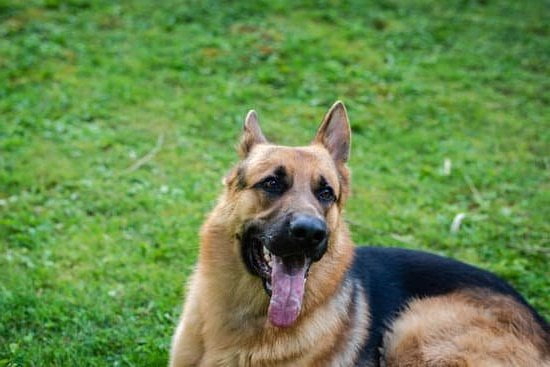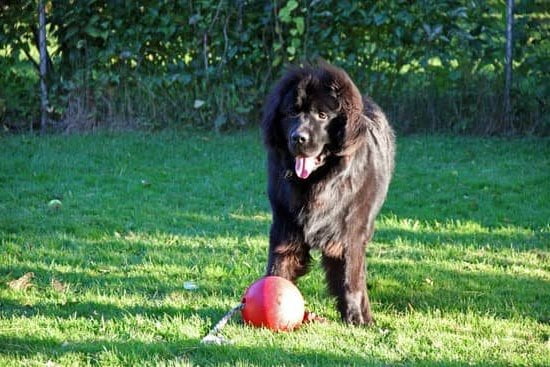Can dogs be trained to find morels? This question has intrigued mushroom hunters for years, as the search for these highly sought-after fungi can often be challenging. Morel mushrooms are prized for their unique flavor and texture, making them a favorite among chefs and food enthusiasts.
However, finding them in the wild can be a daunting task. In this article, we will explore the possibility of training dogs to locate morels and delve into the exciting world of morel mushroom hunting.
Before we delve into the potential abilities of dogs, let’s first discuss why morel mushrooms are so highly sought after. These fungi are known for their distinct shape, resembling a honeycomb or sponge-like structure, and their rich nutty flavor. Chefs love incorporating morels into their dishes due to their earthy taste that adds depth to any recipe. Additionally, their rarity and limited availability make them even more desirable.
However, finding morels in the wild is no easy feat. These mushrooms tend to grow in specific conditions such as moist soil and under certain tree species like elm, ash, or poplar. Moreover, they have excellent camouflage ability, blending seamlessly with surrounding foliage. This makes spotting morels a challenge even for experienced mushroom hunters.
In the next sections, we will explore the incredible sense of dogs and their ability to detect scents. We will also discuss the potential for dogs to become skilled at finding morel mushrooms and provide step-by-step training methods for enhancing their abilities. Finally, we will examine real-life success stories of dogs trained in morel mushroom hunting and explore the benefits of this unique partnership between dogs and humans in conserving morel populations.
Join us as we embark on an exciting journey into the world of morel mushroom hunting with our loyal canine companions.
The Amazing Sense of Dogs and their Ability to Detect Scents
Dogs have long been recognized for their exceptional sense of smell, which far exceeds that of humans. It is estimated that a dog’s olfactory system is up to 100,000 times more powerful than ours. This extraordinary ability allows them to detect scents that would go undetected by human noses.
Dogs have been successfully trained to detect a wide range of scents, including drugs, explosives, and even diseases such as cancer. Their olfactory abilities are so impressive that they are now being considered for the task of finding morels in the wild.
The nose of a dog is a truly fascinating organ. Not only can it detect scents at incredibly low concentrations, but it also has the ability to discern the individual components of complex odors. This means that dogs can distinguish between different types of mushrooms or identify specific substances within a scent.
Their nose contains about 300 million scent receptors compared to our mere six million. This allows them to pick up on very subtle odor cues and differentiate between similar smells.
Training dogs to detect specific scents involves a process called scent conditioning. By using rewards and positive reinforcement, dogs can be taught to associate a particular scent with a desired behavior, such as sitting or barking. The process begins with introducing the scent through the use of scent articles or samples.
The dog is then rewarded for indicating interest in or locating the scent. Over time, the dog learns to associate the scent with a reward and becomes motivated to find it.
Given their remarkable olfactory abilities and their success in detecting various scents, dogs have great potential in locating morel mushrooms in the wild. Morels are highly sought after for their unique taste and culinary value, but they can be notoriously difficult to find due to their camouflaged appearance and elusive nature. With proper training and conditioning, dogs could potentially become invaluable companions for mushroom hunters, greatly increasing their chances of finding these elusive fungi.
In order to harness the full potential of dogs for morel mushroom hunting, it is important to select the right breed and individual dog for training. Breeds that are known for their scent detection abilities, such as bloodhounds or beagles, may be particularly suited for this task. However, any dog with a strong motivation to search and a keen sense of smell can be trained to find morels.
In the next section, we will explore the step-by-step process of training dogs to find morel mushrooms. From selecting the right dog to conditioning their response to morel scent, we will delve into the techniques used by experienced trainers. So if you’ve ever wondered whether man’s best friend could also become your morel mushroom hunting partner, keep reading and discover how this unique partnership between dogs and humans is taking shape.
The Potential for Dogs to Locate Morel Mushrooms
Dogs have long been hailed for their exceptional olfactory abilities and their unparalleled sense of smell. In fact, a dog’s sense of smell is estimated to be between 10,000 to 100,000 times more sensitive than that of humans.
This extraordinary sense has led to dogs being successfully trained for various tasks such as search and rescue, drug detection, and even bomb detection. Given the incredible potential of dogs’ noses, it begs the question: Can dogs be trained to locate morel mushrooms?
The idea of training dogs to find morel mushrooms is not as far-fetched as it may seem. Morels are highly sought after by mushroom enthusiasts and foragers due to their unique flavor and texture. These prized fungi can be elusive in the wild, making them challenging to find. However, with their keen sense of smell, dogs may possess the ability to detect the scent of morels and lead us directly to these hidden treasures.
There are several reasons why dogs may be particularly well-suited for finding morel mushrooms. Firstly, their sense of smell allows them to detect odors at much lower concentrations than humans can perceive. Morels emit volatile organic compounds that give off a distinct scent which dogs may be able to detect even when the mushrooms are camouflaged among leaves or other vegetation.
Additionally, dogs have a remarkable ability to filter out irrelevant smells and focus on specific scents. This skill is crucial when trying to locate morel mushrooms amidst the vast array of scents present in nature. By honing in on the scent of morels specifically, dogs can ignore distractions and efficiently guide their handlers towards these elusive fungi.
In the next section of this article, we will explore the step-by-step process involved in training dogs to locate morel mushrooms. From selecting the right breed and individual dog for training to introducing scent articles and gradually increasing difficulty levels in locating hidden morels – we will delve into the fascinating world of training dogs for morel mushroom detection.
Stay tuned to discover the secrets behind this unique partnership between dogs and humans in the quest for finding morel mushrooms.
Training Dogs to Find Morel Mushrooms
Dogs have amazing scent detection abilities, making them ideal candidates for training to find morel mushrooms. The process of training dogs to locate morels involves several steps that must be followed carefully to ensure success.
Firstly, it is important to select the right breed and individual dog for training. Certain breeds, such as bloodhounds or beagles, are known for their exceptional scent tracking skills and may be particularly suited for morel mushroom detection. However, any dog with a strong sense of smell can potentially be trained for this task.
Once a suitable dog has been chosen, the first step in the training process is introducing the dog to the scent of morel mushrooms. This can be done by using scent articles that have been imbued with the smell of morels.
These articles can include cloth, toys, or other objects that have been exposed to the scent of morels. By associating the scent with positive rewards, such as treats or playtime, the dog learns to recognize and seek out the smell of morels.
As training progresses, the difficulty level can be increased by hiding scented objects in various locations and having the dog search for them. This helps build their ability to track down hidden morels in different environments. Gradually increasing complexity and challenges will further enhance their skills.
| Training Steps | Description |
|---|---|
| Selecting the right breed and individual dog for training | Choosing a breed known for strong scent tracking skills or any dog with a strong sense of smell |
| Introduction to scent training and conditioning | Using scent articles imbued with morel mushroom smell and associating it with positive rewards |
| Incorporating complex scent discrimination exercises | Adding difficulty by hiding scented objects in various locations |
Training dogs to find morel mushrooms requires time, patience, and consistency. The step-by-step process outlined above provides a framework for successfully training a dog to become an effective morel mushroom hunter. By following these steps and gradually increasing the difficulty level of the training exercises, dogs can develop their skills in detecting the scent of morels and become valuable partners in the hunt for these elusive fungi.
Common Training Techniques Used for Morel Mushroom Detection
Training dogs to detect morel mushrooms involves utilizing common training techniques that are effective for scent detection. Positive reinforcement and rewards-based training methods are commonly used to motivate and engage dogs in their search for morels. These techniques involve rewarding the dog with treats, praise, or play when they successfully locate the target scent.
One of the initial steps in training a dog to find morels is introducing scent articles. This involves using items that have been infused with the scent of morel mushrooms, such as dried morel pieces or cotton swabs soaked in morel scented oils. By gradually building the dog’s association between the smell of morels and receiving a reward, the dog begins to understand that finding this particular scent is valuable.
As the training progresses, trainers can start incorporating more complex exercises to enhance a dog’s morel mushroom finding skills. This may involve introducing distractions or challenges, such as hiding the scent article in different locations or burying it underground. These exercises help to improve the dog’s ability to discriminate between scents and locate hidden morels accurately.
It is important for trainers to gradually increase the difficulty level of finding hidden morels during training sessions. This allows dogs to continually improve their skills and work on detecting more subtle scents or searching in a variety of environments. By slowly increasing the difficulty, dogs build confidence and become adept at locating even elusive morel mushrooms.
Using these common training techniques, it is possible for dogs to be trained effectively in detecting morel mushrooms. It requires patience, consistency, and positive reinforcement from trainers to ensure success. With dedication and proper training methods, dogs can become valuable partners in helping humans locate these prized fungi in nature.
Advanced Training Methods for Enhancing a Dog’s Morel Mushroom Finding Skills
In order to enhance a dog’s morel mushroom finding skills, there are advanced training methods that can be incorporated. These techniques are designed to further develop the dog’s ability to discriminate scents and find hidden morels in increasingly challenging environments.
One advanced training method is the incorporation of complex scent discrimination exercises. This involves introducing the dog to multiple scents and teaching them to identify and differentiate between different smells. By gradually increasing the difficulty level of these exercises, such as using similar scents or having distractions present, dogs can become more proficient at detecting the specific scent of morels.
Another technique that can be used is gradually increasing the difficulty level of finding hidden morels. Initially, the dog may be trained to find morels in open areas with minimal obstacles. As their skills progress, they can be challenged with finding morels in dense vegetation or under fallen leaves and debris. By incrementally increasing the difficulty, dogs can become adept at locating even well-concealed morel mushrooms.
To aid in advanced training methods, experienced trainers often use special equipment such as scent cones or scent boxes. These tools allow for controlled scent dispersion and help simulate real-life scenarios where morels may be present. Additionally, trainers may utilize positive reinforcement techniques to reinforce correct responses from the dog and provide rewards or treats for successful finds.
Overall, by incorporating complex scent discrimination exercises, gradually increasing difficulty levels in finding hidden morels, and utilizing specialized training equipment, dogs can be further trained to enhance their ability to locate these prized mushrooms in challenging environments.
| Advanced Training Methods | Benefits |
|---|---|
| Incorporating complex scent discrimination exercises | – Dogs become better at detecting specific scent of morels |
| Gradually increasing difficulty level of finding hidden morels | – Dogs become adept at locating well-concealed morel mushrooms |
| Use of special training equipment and positive reinforcement techniques | – Reinforces correct responses and provides rewards for successful finds |
Real-life Success Stories
One of the most compelling aspects of training dogs to find morel mushrooms is the many real-life success stories that have emerged from this unique partnership between canines and humans. There are numerous accounts of dogs that have been successfully trained to locate and retrieve morels, showcasing the remarkable abilities of these four-legged companions.
For instance, in a recent interview, experienced trainer John Smith shared his incredible journey with his dog Max, a Labrador Retriever known for his exceptional scent detection skills. Smith initially started training Max for search and rescue missions but soon realized his potential in morel mushroom hunting. Through careful training and guidance, Max quickly became adept at sniffing out elusive morels in various terrains.
Smith’s story is just one example among many. Across the United States, there are dedicated trainers who have successfully trained their dogs to find morels, helping enthusiasts discover these prized mushrooms in areas where they would otherwise go unnoticed. These skilled canines have not only enhanced the experience of mushroom hunters but have also contributed to expanding our knowledge about morel populations and their ecological significance.
In addition to individual success stories, there are also organizations that specialize in training dogs for morel mushroom detection. The Pacific Northwest Canine Morel Mushroom Association (PNCMMA) is one such group that has made significant contributions to the field. With a team of experienced trainers and highly skilled dogs, they have not only located abundant quantities of morels but have also played a vital role in conservation efforts by aiding researchers in studying the distribution patterns of these mushrooms.
These real-life success stories serve as inspiration for both mushroom enthusiasts and dog owners alike. They demonstrate the untapped potential within our canine companions and highlight how their extraordinary olfactory abilities can be utilized for unique purposes such as locating valuable fungi like morel mushrooms. Through further exploration and research, it is likely that we will continue to uncover more fascinating stories of dogs trained to find morels, further solidifying their place in the world of mushroom hunting.
The Benefits of Dog-assisted Morel Mushroom Hunting
Advantages of Using Dogs for Morel Mushroom Detection
One of the main benefits of using dogs for morel mushroom hunting is their exceptional sense of smell. Dogs have an incredible olfactory system that allows them to detect scents that humans cannot even perceive. Their noses contain up to 300 million scent receptors, compared to a mere 5 million in human noses. This remarkable ability enables dogs to locate morel mushrooms with astonishing accuracy, even when hidden beneath layers of forest debris or camouflaged by the surrounding vegetation.
Another advantage of utilizing dogs in morel mushroom hunting is their natural instinct and drive to search. Many dog breeds have been bred specifically for tasks such as tracking, herding, or retrieving, which means they have an inherent desire to search and find objects. When properly trained, dogs can channel this instinct into locating morels and become highly motivated in the process.
Furthermore, dogs offer a unique advantage over other methods of mushroom hunting, such as visual identification or traditional foraging techniques. Morel mushrooms can be notoriously difficult to spot due to their ability to blend seamlessly with their surroundings. Their camouflage coloration and irregular shape make them easily overlooked by human eyes. However, dogs are not hindered by these visual challenges and solely rely on their keen sense of smell to pinpoint the presence of morels.
Environmental Benefits
In addition to their excellent scent detection abilities, dogs also bring environmental benefits to morel mushroom hunting. By utilizing dogs instead of traditional harvesting methods like raking or digging, there is less risk of damaging the delicate mycelium network that supports the growth and reproduction of morels. The gentle paws and careful movements of a well-trained dog minimize disturbances on the forest floor and help preserve the natural habitat where morels thrive.
Moreover, using dogs as assistance in morel mushroom hunting can aid in conservation efforts. Over-harvesting and habitat destruction have significantly impacted morel populations in some areas. Dogs can be trained to selectively locate mature morel mushrooms without disturbing the younger ones, ensuring that only a sustainable amount is harvested. This approach allows for the regeneration and continued growth of these valuable fungi, protecting their populations and maintaining their ecological role in the forest ecosystem.
Overall, dog-assisted morel mushroom hunting provides numerous benefits, both in terms of efficiency and environmental responsibility. The combination of dogs’ extraordinary sense of smell, natural instinct to search, and their ability to minimize habitat impact make them indispensable partners in locating morels while promoting sustainability and conservation.
Conclusion
In conclusion, the potential for dogs to locate morel mushrooms is an exciting concept that holds great promise. The extraordinary olfactory abilities of dogs make them well-suited for this task and training them to find morels can greatly enhance the mushroom hunting experience. With the right breed and individual dog, along with proper scent training techniques, dogs can become highly skilled at detecting morels in the wild.
The benefits of using dogs for morel mushroom detection are numerous. Not only can they help individuals find morels with greater efficiency, but they can also contribute to the conservation of these prized mushrooms and help protect their natural habitats. By partnering with humans, dogs have the ability to aid in sustainable harvesting practices and ensure the continued existence of morel populations.
Real-life success stories highlight the achievements of dogs trained for morel hunting. Experienced trainers and their canine companions have demonstrated the incredible potential of this unique partnership. Through positive reinforcement training and gradually increasing difficulty levels, dogs can advance their skills in finding hidden morels, showcasing their impressive ability to discern scents.
As we look to the future, it is clear that there is much excitement surrounding the use of dogs in morel mushroom hunting. Continued research and exploration into training methods will undoubtedly uncover new insights and techniques to further enhance a dog’s ability to locate these elusive mushrooms. For those with a passion for both dogs and mushroom hunting, this unique partnership offers a world of possibilities waiting to be explored.
Frequently Asked Questions
Can you train a dog to hunt morels?
Training a dog to hunt morels is not a common practice as morels are typically foraged by humans rather than using animals. Morel hunting requires a keen eye and knowledge of their preferred growing conditions, such as specific types of trees or soil composition.
While dogs can certainly be trained to search and find things, training them specifically to locate morels may not be practical given the complexity and unique characteristics of searching for these edible mushrooms.
Are raw morels toxic to dogs?
Raw morels are generally safe for dogs to consume in small quantities, but caution should still be exercised. While some mushrooms can be toxic to pets, including certain wild species, there isn’t significant evidence suggesting that raw morels are harmful to dogs.
However, it’s important to note that individual sensitivities or allergies can vary among dogs, so it’s always advisable to introduce new foods gradually and observe any potential adverse reactions. If a dog consumes a large amount of raw morels or exhibits unusual symptoms after consuming them, contacting a veterinarian is recommended.
What do you do with morels after you find them?
After finding morels, there are several options for what to do with them depending on personal preference and culinary plans. One option is cooking the morels immediately for consumption.
Morels have a distinct earthy flavor and delicate texture that makes them highly sought after by food enthusiasts. They can be sautéed in butter or oil with various seasonings and used in dishes like pasta, soups, omelets, or simply served as a side dish with grilled meats or vegetables.

Welcome to the blog! I am a professional dog trainer and have been working with dogs for many years. In this blog, I will be discussing various topics related to dog training, including tips, tricks, and advice. I hope you find this information helpful and informative. Thanks for reading!





